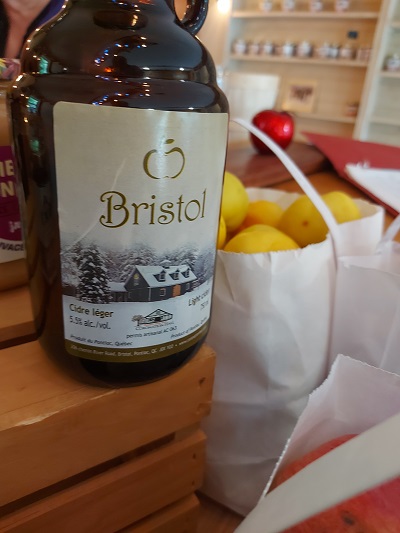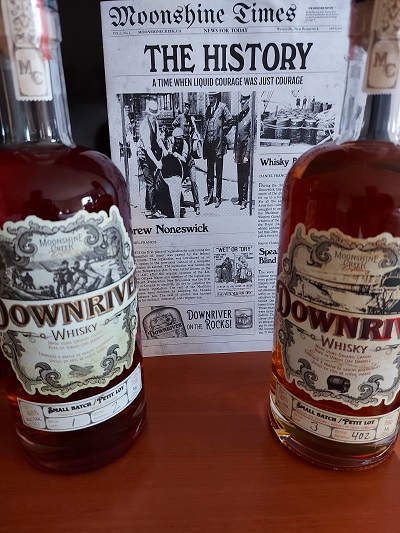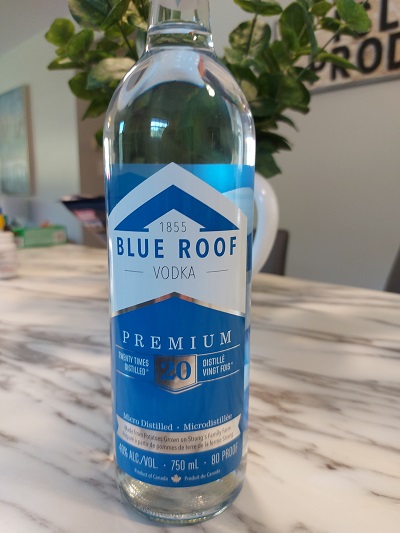In a recent post I wrote about potato vodka from Blue Roof Distillery in New Brunswick. Last evening I had a few drinks of the product and I woke up at 3am with a raging headache. So….a more critical analysis of the product is now called for.
This is where I get myself in trouble. This is always where I get accused of picking on the little guy. This is where I get accused of using my M.Sc. education unfairly.
As I point out over and over again in my Distilling workshops, the craft alcohol industry needs to improve its products. Craft operators need to embrace the science of fermentation and distillation. The notion that because a product is craft it will automatically sell in large numbers is a false notion. You can sell anything to anybody one time. But when that person wakes up with a smashing headache, he will not return to buy a 2nd bottle. He will gravitate back to his big-name commercial brand name product.
At issue with the Blue Roof product is the very obvious aroma of what I call “pear drop”. When I tasted the vodka at the Blue Roof tasting room I immediately spotted the defect. I warned the lady in the tasting room that I am a harsh critic of distilled alcohol and that I would be taking the bottle to my next workshop in Kelowna, BC. She did not seem too fussed by that suggestion. When I did get to speak to the distiller I quizzed him as to what %abv he stopped collecting at during his rectification run. He said he did not distill using the %abv approach. Rather he stopped collecting when the temperature at the column top exceeded about 79C.
Where far too many distillers err is in their understanding of alcohol. There is actually no one single substance called alcohol. Hard to believe – because bottles of beer, wine, and spirits all tell us a % alc figure. When yeast ferments a fermentable sugar (potato starch, grain starch etc..) the metabolic pathways generate molecules with anywhere from 2 to 6 carbon atoms in their structure. These assorted molecules all will have an -OH attachment to their tail ends. Collectively, all these molecules are called “alcohol” by virtue of the -OH attachment. Fermentable starches will also contain a substance called pectin. Proteolytic enzymes within the yeast cell will transform these pectins into methyl pectate which has the aforementioned “pear drop”, solvent taste. Potatoes evidently are prone to expressing more of the pectates. These pectates have a lower boil point than the alcohol molecules. To rid the distilled alcohol of the solvent aroma, a distiller must make a conscious effort to discard the first runnings in both the stripping run and the rectification run. Another approach I have seen is to have the still fitted with a de-methylyzer. This is a device in which the temperature is set at around 68 C. Methyl pectate molecules typically vaporize around 64-65C. Ethanol vaporizes at 78.5C. A vapor stream entering the de-methylyzer will see the alcohol molecules condense and fall back down the still column. The pectates will remain in vapor form and will be directed away from the process into a separate condenser where they are discarded.
I think I will leave it at that for now. In your travels if you happen to be given a chance to sample some craft vodka, take a bit of it in the palm of your hand and rub your hands together. Now smell your hands. A properly made vodka should have NO aromas. It should be neutral, it should be clean. If your nose detects any “pear drop” or solvent hints, then you can immediately begin to question the distillation process. In my opinion, the craft spirits industry needs to embrace the science that underpins “booze”. As more and more customers also start to embrace the science, these customers can exert influence on the craft distilleries. Selling anything to anybody one time just does not cut it. The big name commercial operators continue to rub their hands in glee. Craft distilling is not the threat they were afraid it would be.
I will conclude with a standing invite to attend one of our workshops in Kelowna in the near future. These workshops are NOT just for people interested in starting a distillery. I assure you, after attending a workshop you WILL become a more discerning consumer of “booze”. You WILL understand in detail how whisky, gin, and vodka are made. And who knows….you might even take up the hobby of home distilling. I hear rumors that it is a wonderful hobby……






